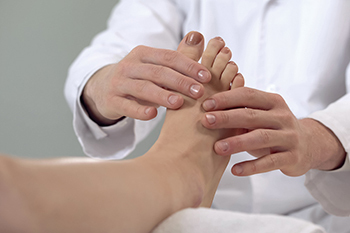
Sesamoiditis is a particular kind of foot condition that primarily impacts the two small bones underneath the big toe. These bones are known as the sesamoids, and they are directly situated behind the joint in the big toe. Sesamoiditis occurs when these bones and the surrounding tendons become inflamed. Some runners can be particularly susceptible to developing sesamoiditis. This is because when an individual runs, they put a significant amount of pressure onto the sesamoids. As a result, runners might even fracture the sesamoids. If a runner uses poor form and improper running techniques, the extent to which the sesamoids could become strained is only exacerbated. Sesamoiditis can be particularly detrimental to runners because having this condition can make the act of running extremely painful. For example, it is difficult to run when your sesamoiditis makes your feet feel tender. You may also feel as though it is difficult or uncomfortable to put weight on your feet. Unfortunately, sesamoiditis can be a headache for runners. If you are a runner who has sesamoiditis or are looking to prevent this condition, contact a podiatrist.
Sesamoiditis is an unpleasant foot condition characterized by pain in the balls of the feet. If you think you’re struggling with sesamoiditis, contact one of our podiatrists of Sayville Foot Care. Our doctors will treat your condition thoroughly and effectively.
Sesamoiditis
Sesamoiditis is a condition of the foot that affects the ball of the foot. It is more common in younger people than it is in older people. It can also occur with people who have begun a new exercise program, since their bodies are adjusting to the new physical regimen. Pain may also be caused by the inflammation of tendons surrounding the bones. It is important to seek treatment in its early stages because if you ignore the pain, this condition can lead to more serious problems such as severe irritation and bone fractures.
Causes of Sesamoiditis
- Sudden increase in activity
- Increase in physically strenuous movement without a proper warm up or build up
- Foot structure: those who have smaller, bonier feet or those with a high arch may be more susceptible
Treatment for sesamoiditis is non-invasive and simple. Doctors may recommend a strict rest period where the patient forgoes most physical activity. This will help give the patient time to heal their feet through limited activity. For serious cases, it is best to speak with your doctor to determine a treatment option that will help your specific needs.
If you have any questions please feel free to contact our office located in Sayville, NY . We offer the newest diagnostic and treatment technologies for all your foot and ankle needs.
